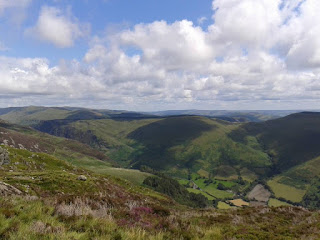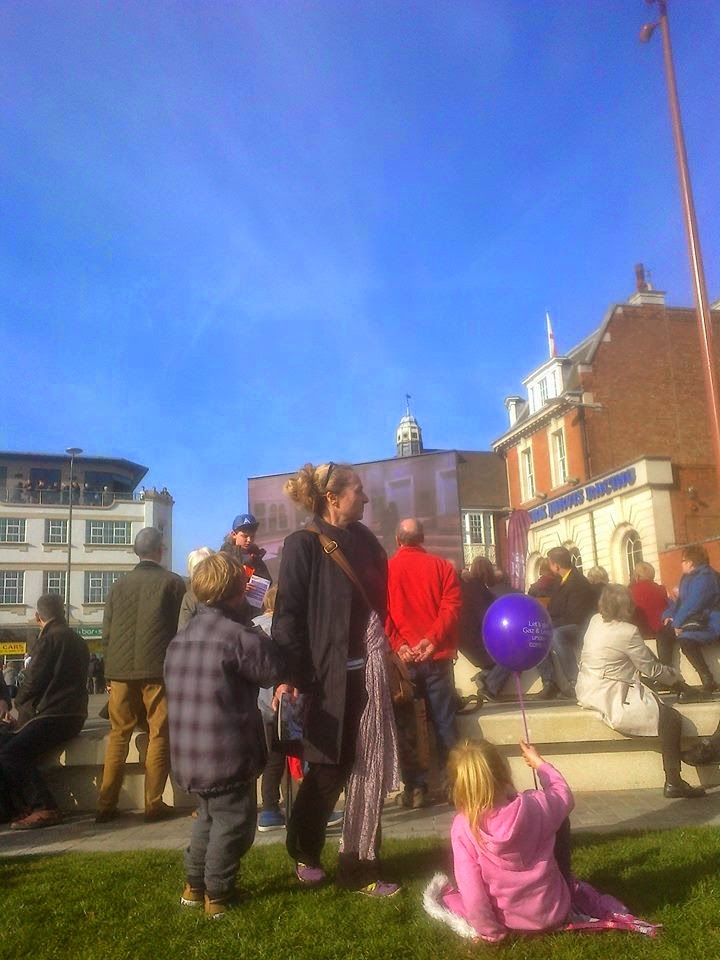One of the most pervasive memories of my recent visit to the saltmarshes east of Gravesend was that haunting sense of solitude, that aching feeling of loneliness when an explorer realises that he is an aberrant human speck in a landscape of quiet stillness. I walked out there looking for an abandoned Victorian fortress, only - to my pleasant surprise - to find a completely different Victorian fortress, as well as an unexpected shipwreck.
We park slightly east of the village of Higham, and set off along a footpath heading toward Gravesend. To our right, a scrappy hedgerow separates us from the marshes and, on our left, an abandoned section of the old Thames and Medway Canal, neglected and choked by reeds, follows our route. Presumably this track is part of its old towpath. Despite its dilapidated condition, there is local interest in restoring this
historic waterway.
 |
| Thames And Medway Canal Map. Gravesend at the top, Rochester at the bottom, Thames on the right |
 |
| Two views of the Shornemead casements from the rear, showing the ravages of time and taggers. |
 |
| View of the eastern Casements, from the foreshore |
The fort remained active until the 1950's, although its purpose changed with the times; it was disarmed of its heavy guns at the turn of the 20th Century, due to its on going subsidence problems. For a time, it was used by the Thames Militia Division (Submarine Miners), Royal Engineers as a training centre before being recommissioned with artillery during the First World War. The Second World War saw it being replenished with a battery, pillboxes, searchlights and other structures, traces of which can still be located; the whole area was surrounded by a tangle of barbed wire.
 |
| Western casements from the foreshore. Younger vulpine there for scale. |
Once peace returned, the Fort became obsolete. Barracks and administration buildings were demolished, although the Casements and the underground magazines survive. However, only the overground remnants are officially accessible.
Shornemead Fort is not as inaccessible as it's neighbour at Cliffe (as demonstrated by the fact that there were other visitors, two teenagers on bicycles), and there are fewer remains to be seen... yet it remains evocative. A stroll around the inside of the Casements reveals hooks and winch machinery still in situ, the rusting remnants of the equipment once used to drag heavy ammunition from the magazine's to the surface. Such equipment can still be seen in good condition under the ramparts of Tilbury Fort, a couple of miles away on the northern bank of the river.
Small rectangular holes in the ground, half-heartedly concealed by rubble masonry, reveal the continued existence of the subterranean tunnels, but ingress is hazardous due to their flooded and decaying condition. However, in the recent past, adventurous souls have succeeded.
 |
| Shornemead in relation to Coalhouse and Cliffe Forts |
This part of our exploration over, we returned to the car and headed east, driving through Higham and toward Cliffe, passing the impressive gatehouse of Cooling Castle as we did so. This site, once owned by the gentrified Cobham family and abandoned after being severely damaged during the Wyatt Rebellion of 1554, is now a rather agricultural-themed venue that hosts wedding receptions. A villa in the grounds beyond the Gatehouse is the home of a well-known musician.
 |
| Cooling Castle |
 |
| Cliffe Explosive Works, aerial view, ©NMR |
 |
| Satellite view of the Cliffe Explosive Works |
The buildings were spaced far apart to minimise the risk of accidental explosions causing chain reactions; nevertheless, in the twenty-nine years that the Works was operational, sixteen people lost their lives. The worst year was 1904; two explosions, a fortnight apart, killed six workers. It was a dangerous line of work, despite the best precautions of the time.
 |
| Cliffe Explosive Works. On the other side of the river, Coryton and Canvey Island in Essex. ©Friedman of KHF |
The sharp downturn in the explosives market led to the Cliffe site closing in 1921. Some light demolition took place after the closure, but these buildings - for obvious reasons - were built very sturdy indeed, and as it was simply too troublesome to level them completely, they were simply abandoned to the elements. And here they remain, in a remote pocket of the Hoo Peninsula, steadfastly resisting the ravages of the last ninety-four years. The main threat in recent years came from the suggestion of an airport being built on the marshes, an idea put forward by a floppy-haired London Mayor with a clearly less than cursory knowledge of civil engineering. Unsurprisingly, the idea never got off the ground ( pun intended).
We walked a rather circuitous route to get to the Works, as we had to skirt the flooded quarries of the Nature Reserve. Upon arriving, I observed that the site was as bleak and austere as the other saltmarsh sites, although the presence of many ditches and channels made it somewhat more treacherous. We were not alone, however; there were plenty of cows and sheep wandering the ruins, and a handful of corvids and marsh birds, including a heron.
The site is owned by the Port Of London Authority and managed by tenant farmers, and permission to enter is never given. We decided to ignore the whole 'permission' thing, and just be discreet. Around the breezy and somewhat forbidding site we roamed, trying to make sense of some very alien structures.
 |
| Apparently a cordite store |
 |
| Abandoned buildings, purpose unknown |
 |
| Nope, no idea. |
.
Inside one of the buildings, we found a curiosity. A caravan, which showed evidence of brief occupation in 2008. It would have quite a task to drag a caravan across such hostile terrain and then jostle it into a corner of an abandoned shed, and the motive for such an action remains a mystery.
 |
| ? |
Our mission is complete. We have traipsed the North Kent marshland and visited our two isolated sites. We have not worn holes in our shoes, but it certainly feels as though we have worn holes in our feet. Exposure to the autumnal elements has led us to feel tired, hungry and, not surprisingly in such a saline atmosphere, thirsty.
An hour later, with the descent of night, we find ourselves nestled in a snug corner of a pub at the western end of Rochester's charming Dickensian High Street, eagerly awaiting the meals we have ordered, and taking deep draughts of the drinks we have earned. Like Edwin Drood, the relics of the Hoo Peninsula may be mysterious, but they are no longer remote from our experience.
Links:
Shornemead Fort in the 1920's
Cliffe Explosive Works, inc. Inquesr Report on 1904 Explosions
Forts And Foreshores (Part One)
Forts And Foreshores: The Other Side







































